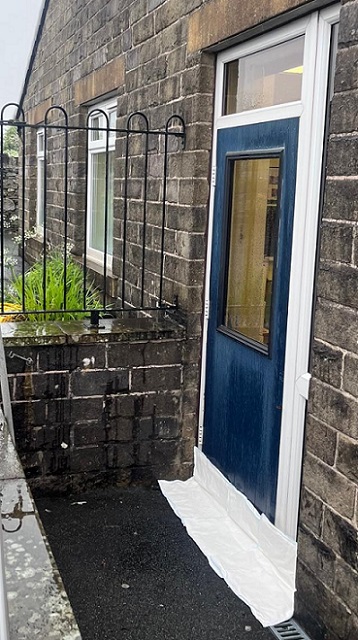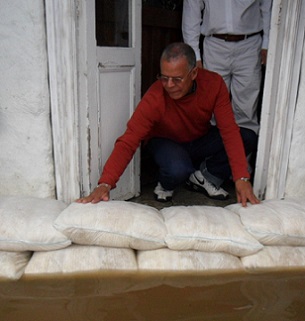 FloodSax in their dry state soaking up floodwater to prevent it getting into a Huddersfield primary school
FloodSax in their dry state soaking up floodwater to prevent it getting into a Huddersfield primary school
 FloodSax energised as alternative sandbags holding back filthy floodwater
FloodSax energised as alternative sandbags holding back filthy floodwater
FloodSax worth just £20 save school from potentially thousands of pounds of flood damage
FloodSax alternative sandbags were used in an unusual way to stop rainwater getting into a primary school.
A gutter right outside the door at the school in Huddersfield, West Yorkshire, had become blocked with leaves and debris and torrential rain meant a pool of water quickly formed which was starting to seep under the door and into the school.
Floodwater wrecks everything it touches so it was vital to stop the water immediately before it could damage the floor, walls and possibly even the electrics causing hundreds, if not thousands, of pounds damage.
The school is near the headquarters of Environmental Defence Systems Ltd which designed and manufacture FloodSax and they responded immediately to the urgent call for help and within minutes had put three FloodSax outside the door.
This water damage prevention technique was unusual as the FloodSax were used in their dry state rather than being transformed into sandless sandbags.
In their dry state FloodSax are very flat with a large surface area and a gelling polymer inside which soaks up any water. They are used this way in homes, businesses, civic buildings, hospitals and supermarkets to soak up internal floods, spills and leaks to prevent costly water damage and also ensure health and safety so people don’t slip on the water.
They are usually only deployed this way inside, but quick-thinking Lucy Bailey from Environmental Defence Systems Ltd positioned them like this outside the door to soak up the water and prevent it from seeping into the building.
If FloodSax are deployed as instant sandless sandbags they need to be fully immersed in water which the gelling polymer then absorbs and retains so the FloodSax expands in minutes to become an instant sandbag but without any sand.
Lucy said: “Helping the school shows just how versatile FloodSax can be. It took just three FloodSax to soak up all the water which disappeared into the gelling polymer and there was no damage at all to the school.
“As more water soaked into the FloodSax their weight increased and would eventually have been transformed into alternative sandbags if enough rainwater had poured down.”
FloodSax retail for around £140 for a box of 20 and are far more flexible, cost-effective and environmentally friendly than traditional sandbags.
For more information on FloodSax and where to buy them, either online of in store, go to https://www.floodsax.co.uk/